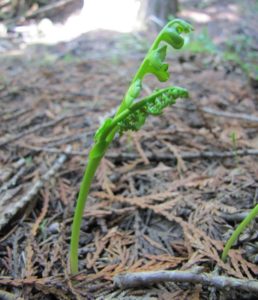Cedar Ecology

On July 7, 2012, local botanist George Thornton lead a group of community members into a seldom seen Western Red Cedar ecosystem near Chesaw, WA. Mr. Thornton opened the first Highland Wonders series in November 2010 by sharing his knowledge and photos of unique and rarely seen Okanogan Highland plants; in the summer of 2011, he led a walk along the wetland fringe and woods at Lost Lake, and 2012 brought this opportunity to learn more about Okanogan County’s remnant cedar populations. A group of community members ventured Northeast of Buckhorn Mountain, where an extraordinary ecosystem thrives because of the shade, stable soils, organic matter and habitat provided by the Western Red Cedar.

